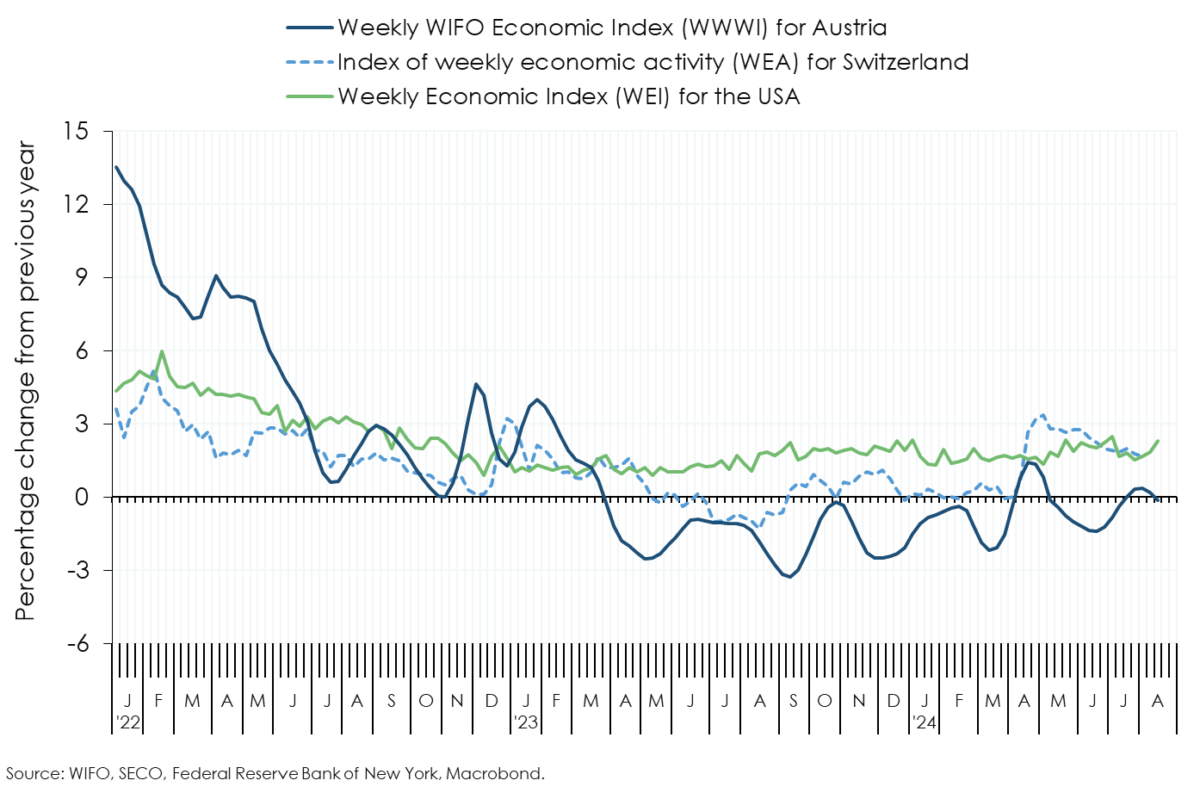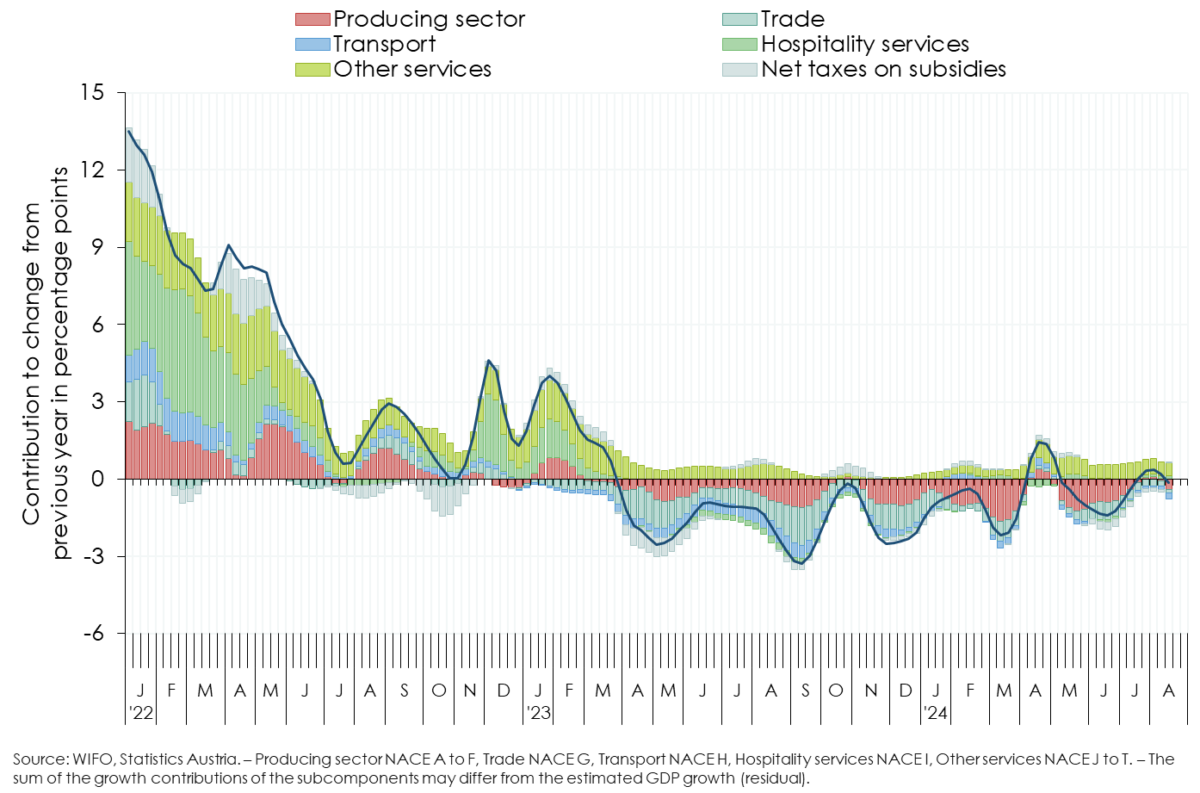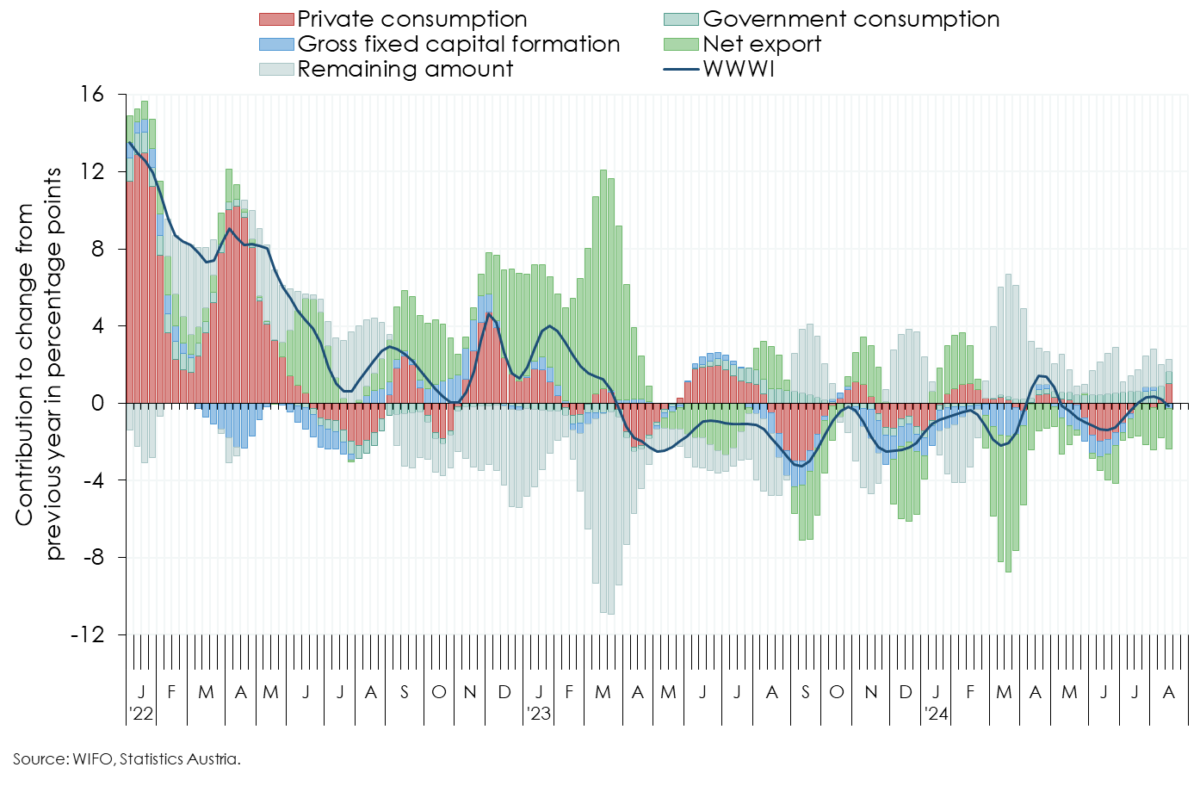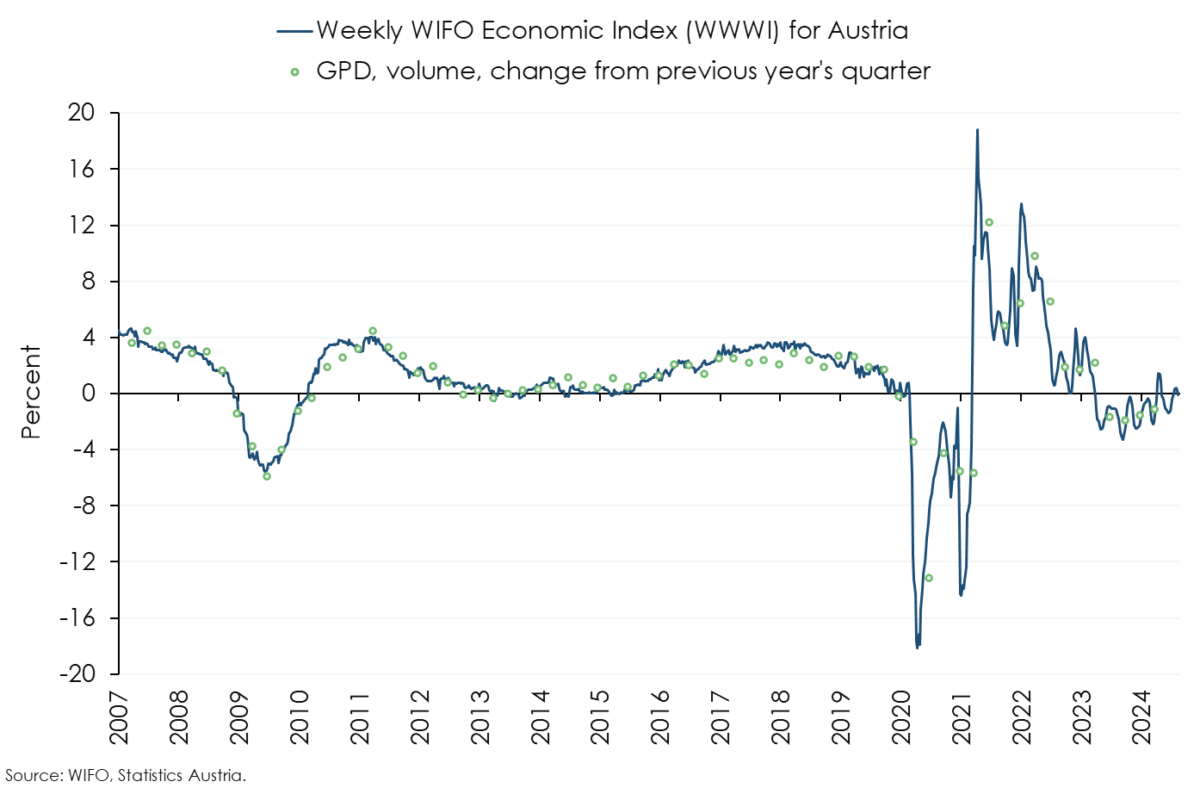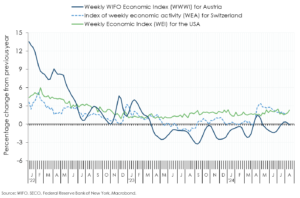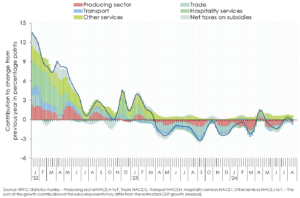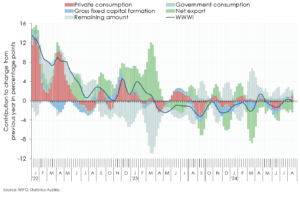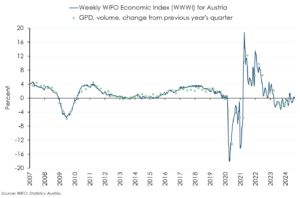
Weekly WIFO Economic Index
WWWI for GDP and its subcomponents
Based on the weekly indicator for real GDP (WWWI), domestic economic output in July (calendar weeks 27 to 30) was ¼ percent below the previous year's level (June –1¼ percent, revised). In the first half of August, economic activity is likely to have remained unchanged compared to the previous year1.
According to Statistics Austria, preliminary realised real retail sales were surprisingly weak in June at –4.4 percent compared to the previous year (WWWI estimate of 19 July for June 2024 –¾ percent). The preliminary figures are subject to (in some cases significant) revisions and are therefore used in the current calculations in a somewhat weaker form. Nevertheless, this (provisionally) realised weaker starting position influences the estimates for retail sales, private consumption and value added in trade for July and August.
The inflation-adjusted volume of non-cash transactions as an indicator of consumer spending by private households shows a roughly equal year-on-year decline in demand for goods (retail sales) and services in July. Private consumption is likely to have fallen by ¾ percent in July compared to the previous year and increased by ½ percent in the first half of August (June –3½ percent).
The development of gross fixed capital formation is determined by economic output (industrial production) and sentiment in the manufacturing sector (according to the WIFO-Konjunkturtest). A year-on-year decline of ½ percent is estimated for July (June –3¼ percent).
The decline in industrial production and the major demand components and the resulting impact on foreign trade resulted in a negative contribution to GDP growth from net exports in the broad sense of 1¼ percentage points in July (June –1 percentage point).
The number of trucks on Austria's motorways fell in July compared to the previous year. The volume of rail freight traffic and the number of passenger flights handled at Vienna Airport increased in July, while cargo flights have risen very strongly since the beginning of the year. However, according to the WIFO-Konjunkturtest, business climate in the transport sector deteriorated again in June, July and August. Together with the development of the indicators in freight transport, the transport sector (NACE 2008, section H) recorded a year-on-year decline in value added of 2 percent in July and 3¾ percent at the beginning of August (June +¼ percent).
The WWWI estimates are based on unadjusted weekly data modelled in a year-on-year comparison. In the goods-producing sector and the closely related market-based service sectors in particular, the calculations are influenced by two more working days in July and one less working day in August than in the previous year.
Employment in the goods-producing sector (NACE 2008, sections A to E) fell in July for the seventh time in a row due to the recession and the number of people looking for work has been rising at double-digit rates since November 2023 compared to the previous year. The WIFO-Konjunkturtest shows no improvement for July and a deterioration in sentiment for August, both in the current situation assessments and in expectations for the coming months.
Sentiment indicators for the construction industry have stabilised but remain in negative territory. The 1½-year increase in the number of persons registered as unemployed in the construction industry has been in double figures again since March, and employment has been falling for almost a year. Value added in the construction (NACE 2008, section F) is likely to have fallen by 2 percent in July and by 1½ percent at the beginning of August compared to the previous year (June –3 percent).
Based on cashless transactions in the restaurant and hotel sector, the sentiment indicators from the WIFO-Konjunkturtest and online search queries from guests from abroad, value added in tourism (accommodation and food services, NACE 2008, section I) is likely to stagnate in July and is estimated to be 2½ percent higher in the first half of August than in the same period last year (June –2 percent).
Due to the weak starting situation in June (retail sales, –4.4 percent in real terms according to Statistics Austria), the estimate for value added was revised significantly downwards for June and July compared to the previous year for trade (NACE 2008, section G): June –6 percent (revision –4¼ percentage points) and July –3¼ percent (–2¼ percentage points). For the beginning of August, value added is estimated to be 2 percent below the previous year's level.
The unfavourable development in manufacturing is dampening momentum in remaining market services (NACE 2008, sections J to N), as the current employment situation and the sentiment indicators from the WIFO-Konjunkturtest also show. Compared to the previous year, value added rose by ¼ percent in July and stagnated in the first weeks of August (June 0 percent).
For other personal services (NACE 2008, sections R to T), based on price-adjusted non-cash payments in the events sector, value added is expected to increase by 3 percent year-on-year in July and by 2 percent in early August (June +4½ percent).
1 The estimates based on unadjusted National Accounts data compared to the same period of the previous year, particularly in the goods-producing sector and the closely related market economy service sectors, are influenced by two additional working days in July 2024 and one day fewer in August than in the previous year.
The inclusion of newly published monthly data, which must be taken into account when estimating the WWWI, led to a revision of the WWWI for GDP: first half of July and June both –0.2 percentage points, May –0.1 percentage point. There were significant downward revisions on the output side in the 1st half of July, particularly in the areas of goods-producing sector (sections A to E), trade (NACE 2008, section G) and transport sector (NACE 2008, section H), while there were major upward revisions in the tourism sector (NACE 2008, section I).
Weekly Economic Activity, WWWI – Production, WWWI – Demand, WWWI (from 2007) The WWWI is under constant development; it is regularly reviewed and will be expanded with new and additional weekly data series as they become available. The WWWI is not an official quarterly esti-mate, forecast or similar of WIFO.
The WIFO Weekly Economic Index (WWWI) is a measure of the real economic activity of the Austrian economy on a weekly and monthly frequency. It is based on weekly, monthly and quarterly time series to estimate weekly and monthly indicators for real GDP and 18 GDP sub-aggregates (use side 8, production side 10) of the Quarterly National Accounts.
With the release for June 2022, the econometric models for the historical decompositions and for nowcasting have been converted to seasonally unadjusted time series. In addition, year-on-year growth rates are now used to estimate the models.
The WWWI estimates are (currently) updated monthly and published on the WIFO website.

